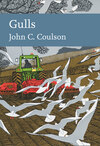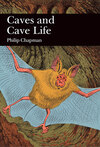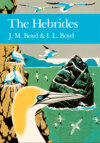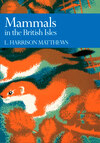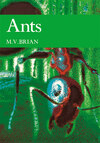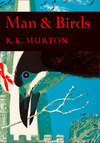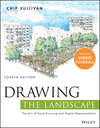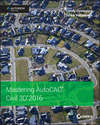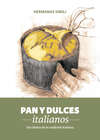Kitabı oku: «Garden Birds», sayfa 8
CHAPTER 3
Nests, Nest Boxes and Breeding
MOST READERS WILL HAVE ENCOUNTERED a bird nesting within their garden, perhaps a Blackbird nesting in a shrub or a Blue Tit occupying a nest box erected for the purpose. Many other nesting attempts will have gone unnoticed, the first indication of their occurrence revealed by the appearance of newly fledged youngsters on the garden lawn or at hanging feeders. But just how many birds nest in our gardens, and how do their nesting attempts and breeding success compare with those made by the same species in other habitats? This is something that we will explore through this chapter, which also includes a wider examination of territory, breeding behaviour and nesting opportunities. Courtship behaviour is covered more fully in Chapter 5.
HOW MANY BIRDS BREED IN GARDENS?
As we saw in Chapter 1, data from the BTO/JNCC/RSPB Breeding Bird Survey have been used to produce habitat-based population estimates for many UK species. The population estimates produced for those habitats associated with human sites – urban, suburban and rural habitation – suggest that sizeable proportions of the populations of several species breed alongside us, with many of these birds using the urban green space that is gardens (Newson et al., 2005). That 33 per cent of our Blackbirds and 54 per cent of our Starlings breed alongside us means that how we manage urban green space, including gardens, can have a significant influence on a large component of their UK breeding populations.

FIG 46. Wrens are cavity nesters, but adaptable enough to take advantage of even the most unlikely cavities. (John Harding)
While these habitat-based population estimates are very valuable, they do not tell the whole story; the Breeding Bird Survey involves participants walking transects through randomly selected survey squares. While this approach works well within much of the wider countryside, it may not give a complete picture of the breeding bird populations to be found in urban areas. Since many urban birds will be breeding and feeding in private gardens, hidden from view by hedges, fences and buildings, it seems likely that Breeding Bird Survey observers will miss a proportion of the birds that they pass while carrying out their fieldwork. The method should allow the survey to pick up changes in urban populations over time, which is its purpose, but it might be less good at determining the size of these populations.
Similar criticisms can also be made of the approaches used to derive national population estimates from atlas data (e.g. Gibbons et al., 1993). While atlas fieldwork covers all habitats, it again suffers from the difficulties of working within urban areas (see Chapter 6) and is likely to miss a sizeable proportion of the bird populations breeding there. Recognition of this problem can be seen when Gibbons et al. (1993) rejected their initial population estimate for House Sparrow in favour of one that had been derived largely from urban data presented by Dennis Summers-Smith (Summers-Smith, 1959). Summers-Smith’s estimate took into account direct measures of House Sparrow density, made in urban and suburban sites within London, alongside those from rural areas. This suggests that finding other ways to secure information on the numbers of birds breeding within urban areas, and their associated green spaces and private gardens, could support the production of more robust estimates of national populations.
One approach, adopted by Bland et al. (2004), is to ask householders to survey their gardens for nesting birds and to report back on what they find. Richard Bland and John Tully, both retired teachers living in Bristol, worked with Jeremy Greenwood of the BTO on a garden-nesting survey, carried out in 2000. A questionnaire was sent to all 12,687 households participating in BTO Garden BirdWatch, with 6,035 useable responses returned. From these, and using additional information on the number and type of households present in the UK (taken from the 1991 housing census), it was possible to produce estimates for the garden populations of 17 familiar species. This approach makes a number of assumptions, most notably that survey respondents find all of the nests on their property and that those participating in the survey are representative of wider society. Neither of these assumptions is likely to be true, but it is unclear how big a difference this makes to the resulting estimates. Undercounting the number of nests will mean that the final estimate is lower than it should be; if Garden BirdWatch gardens are better for birds than non-Garden BirdWatch gardens, then it might mean that the final estimate is larger than it should be. Despite this, the estimates produced in the paper suggest that national population figures, derived from other methods, are too low for several species because we have not looked closely at gardens. The five species where the national estimates produced by Gibbons et al. (1993) are highly likely to have been significantly underestimated are Dunnock, Starling, Great Tit, Blue Tit and House Sparrow, with some evidence to suggest that Robin and Blackbird are also too low. The study also provides important information for Swift and House Martin.
While the different approaches used to derive population estimates for urban breeding birds have their individual limitations, it is useful to look across the range of figures produced to see if there are any general patterns (Table 5). Looking at the figures produced by Bland et al. (2004) suggests that domestic properties and their gardens may sustain densities of nesting birds approaching those seen in many woodland habitats, although the diversity of species present in gardens is considerably less than that seen in woodland. Of course, the figures presented in the table are for the most common and familiar species and do not tell us about the less common species that may also make use of gardens for breeding. We do know, however, that where a garden is located and which habitats surround it will also shape the species using it for nesting. A quiet corner in a rural garden, perhaps with long grass or a tangle of nettles and bramble, might support nesting Red-legged Partridge Alectoris rufa or Blackcap, while the flat-roof of a Georgian town house might have a nesting Lesser Black-backed Gull.
TABLE 5. Estimates of numbers of pairs of birds nesting in gardens in Great Britain derived from the BTO Garden Nesting Survey (Bland et al., 2004), compared to those derived from the national Bird Atlas (Gibbons et al., 1993), the latter split into figures calculated for all habitats other than farmland and woodland, and all habitats.

Now that we have a sense of the numbers of breeding birds present within gardens and the wider urban area, we need to turn to the question of their importance. To some extent we have already touched on this by highlighting the numerical importance of the sizeable breeding populations to be found in gardens. However, such populations are only important for the wider population if they are productive and contribute young birds to the next generation. If the failure rates of nests built in gardens are high, or if the numbers of chicks produced is low, then garden nesting may be a very poor option for a bird. If this proves to be the case, then, as some authors have suggested, gardens may be an ‘ecological trap’ (Robb et al., 2008b). This is what we will turn to look at now.
IS NESTING IN A GARDEN A GOOD OPTION?
There have been various studies looking at the breeding ecology of birds within gardens and the wider urban environment. Some of these have only looked at this habitat; some have looked at different types of urban habitat (e.g. urban versus suburban); and others have looked at how urban breeding compares with that seen in more natural habitats. One of the key measures to examine when seeking to determine whether nesting in a garden is a good option or not is productivity, the number of chicks fledged from the nesting attempt. This is a commonly reported measure but doesn’t tell the whole story because it is the number of those fledglings who go on to recruit into the breeding population, and breed themselves, that actually determines future population size. If productivity is good but subsequent survival poor, then you may find a population is no better off than one in which productivity is poor but subsequent survival good. The difficulty in tracking individual birds through from the egg to when they breed explains why the number of young fledged is so commonly used as the measure of productivity. Since it can also be difficult to follow the sometimes multiple breeding attempts made by a pair across the breeding period, productivity tends to be reported as ‘productivity per nesting attempt’ rather than as ‘productivity per season’.
Perhaps a good place to start is with the familiar Blue Tit and Great Tit, since these are the species that most readers are likely to have encountered breeding within their garden. They are also species for which a good deal of information on breeding biology has been collected, both in a variety of woodland habitats and, to a lesser extent, from within gardens and the wider environment. Cowie & Hinsley’s study, carried out in two suburban areas within Cardiff, underlines that the breeding success of these two species is much lower in suburban gardens than it is in natural woodland habitats (Cowie & Hinsley, 1987). In addition to producing smaller clutches, suburban tits only managed to rear, on average, half as many young as their counterparts living in mixed deciduous woodland typically do. A particular characteristic of these suburban nesting attempts is the mortality of nestlings due to starvation, suggestive of a shortage of favoured invertebrate food during the chick-rearing phase. Other UK work with an urban component has been carried out by Roger Riddington and Andy Gosler, working at Oxford University’s Wytham Wood study site and in the surrounding area. Wytham is a mixed deciduous woodland, of the type that is most productive for nesting tits. Riddington & Gosler (1995) compared the breeding success of the Wytham Wood population with those pairs nesting in smaller woods and local gardens. Clutches initiated in Wytham were larger and started earlier, with larger broods, more fledged young and heavier fledglings, all underlining that the mixed deciduous woodland was the better breeding habitat; unfortunately, Riddington and Gosler did not separate out the garden nesting birds from the other habitat types lumped within their ‘marginal habitat’ category. Examination of nestling diet, through analysis of faecal sacs collected during nest monitoring visits, revealed that the woodland chicks received a better-quality diet, dominated by caterpillars; chick diet in the marginal habitats was dominated by adult flies, beetles and spiders.

FIG 47. Gardens support a wide range of breeding birds, including species like Red-legged Partridge. (Jill Pakenham)
The loss of nestlings is something that has also been reported from work carried out on garden-nesting and urban-nesting thrushes. Murray (2004) found that the daily failure rates of nestling Song Thrushes were significantly higher in gardens and parks than they were in nearby woodland sites. It is important to understand whether such nesting failure is the result of low food availability or increased predation risk. Evidence for a shortage of suitable invertebrate prey within gardens comes from a detailed study of House Sparrow populations living in and around the city of Leicester (Peach et al., 2008). This study, led by Kate Vincent, found an average of just 2.02 chicks fledging per nesting attempt, with a quarter of nesting attempts failing to fledge any young at all. High levels of chick mortality were important in driving this poor performance, with 72 per cent of the chick mortality occurring within the first four days after hatching and most likely the result of starvation. Chick survival and chick body mass at 10–12 days old were both strongly related to the quality of chick diet, with chicks receiving a greater proportion of plant material faring worse than those receiving more invertebrates. An examination of the insects being provisioned to the chicks revealed the presence of craneflies, weevils, spiders, ants and aphids, but few of the grasshoppers and moth caterpillars seen in many other studies.

FIG 48. Grasshoppers feature in House Sparrow diet in many wider countryside studies but are largely absent from urban diets. (Mike Toms)
It has been shown that the body condition of House Sparrow chicks is a good predictor of future survival prospects during the period immediately after they have left the nest. Many of the chicks in the Leicester study were small and of low body weight, suggesting their future survival chances were poor. Interestingly, Liker et al. (2008) found that the body size and condition of adult House Sparrows was lower in an urban environment than a rural one, and that this difference was maintained even when captive individuals from the two populations were fed on identical diets. Liker et al. postulated that this was indicative of carry-over effects from a poor nestling diet. If this is the case, then we might predict that the poor condition, small-sized nestlings fledging from those Leicester nest boxes would go on to become poor condition, small-sized adults. It is unclear whether smaller size and poor body condition is common across urban bird populations but it has also been noted in urban tit populations in Germany (Junker-Bornholdt & Schmidt, 1999).
That the body condition of the chicks in the Leicestershire study was strongly and negatively related to local NO2 concentrations, might suggest that pollution levels in this area were impacting the House Sparrows by reducing the availability of favoured prey. If this didn’t result in starvation while they were in the nest, then it might still reduce their chances upon fledging. Peach et al. (2008) carried out some modelling work to see whether the productivity of this House Sparrow population was sufficient to sustain it longer term. In two of the three study years, the average annual production of young per pair was lower than the predicted threshold required to maintain a stable breeding population.
With all of these different studies, looking at different species in different ways, it can be difficult to tease out common patterns and to draw general conclusions. Attempts have been made to do this by using a technique known as meta-analysis; meta-analysis uses a statistical approach to combine the results from multiple studies. We used this approach to look at a suite of studies that had reported on various measures of breeding success from urban and non-urban sites, selecting only those studies that had made a comparison between paired sites – one urban and one non-urban (Chamberlain et al., 2009a). Our meta-analysis revealed that, across the species studied, urban populations started breeding earlier in the year than non-urban populations but they were less productive, with all the different measures of productivity found to be higher in non-urban sites. Only the rate of nest failure was found not to differ between the two different habitat types.
These differences are of particular interest because relatively early breeding in natural or semi-natural habitats often leads to higher productivity; so why do we not see this in urban habitats? It could be that the supplementary food being provided in gardens supports early nesting (see Chapter 2) but that urban sites then lack the invertebrate foods needed by the resulting chicks, leading to lower levels of productivity. The associated question of whether the supplementary food enables females to achieve breeding condition earlier, or merely shapes the timing of breeding by acting as an indicator of food resources available within the environment, might be answered by our finding that clutch size was larger in non-urban sites. Since you might expect clutch size to be determined by the resources that a female has available, discovering that clutches were not bigger in urban areas might suggest that the supplementary food was not shaping breeding condition itself but merely indicating general feeding conditions in the environment, which might be the trigger to initiate a breeding attempt. Of course, supplementary food could enable females to attain breeding condition earlier, but it might be a different resource (such as calcium) that ultimately limits the number of eggs that a female can produce in an urban habitat.
There is also the possibility that other components of the urban landscape might influence the timing of breeding. Later in this book we will look at the impacts of heat pollution on songbird activity at garden feeding stations, but heat pollution also needs a mention here. Urban areas are often a few degrees warmer than the surrounding countryside and this additional warmth might result in birds nesting earlier in the year than they might otherwise do. It has, for example, been shown that nest boxes exposed to warmer temperatures result in earlier laying by Great Tits (Dhondt & Eyckerman, 1979).
As we noted earlier in this book, there is much variety between gardens, and between different types of urban landscape in terms of their suitability for birds. Consequently, we might expect to see variation in breeding success across different types of gardens and between different parts of a larger urban landscape. Using BTO Nest Record Scheme data, Gavin Siriwardena and Humphrey Crick found that the laying dates of House Sparrows and Starlings varied across the urban landscape, being the earliest in urban sites and latest in suburban sites – interestingly, rural sites were intermediate between the two (Siriwardena & Crick, 2002; Crick & Siriwardena, 2002). Siriwardena & Crick’s work also revealed that Starling clutch size was significantly lower in urban sites, something also evident in the work of Mennechez & Clergeau (2001).
That gardens appear to be a sub-optimal habitat for many small birds, particularly those feeding their chicks on caterpillars, is perhaps not that surprising. The pattern of poor breeding success and low fledging weights seen in gardens is similar to that seen in other sub-optimal habitats, such as small and isolated woodlands (Hinsley et al., 1999). Blue Tits and Great Tits breeding in small woodland fragments tend to be less successful and rear lighter young; in some years, the Great Tit populations using these woods suffer a high proportion of complete nest failures at the chick stage (something that also seems to occur in gardens), suggestive of starvation. This tendency is less evident in Blue Tits, which might help to explain why we see more Blue Tits breeding in gardens than Great Tits, despite the latter’s ready use of garden feeding stations in winter and dominance at suitable nest sites.

FIG 49. Nest survival rates for Blackbirds using rural gardens are higher than those in urban and wider countryside sites. (Jill Pakenham)
It is worth just reiterating that gardens vary in their structure, location and in the resources they contain. The consequences of this for nesting birds can be seen quite clearly in a piece of recent work by colleagues at the BTO who have been developing new statistical approaches to look at nesting success (Miller et al., 2017). This work, which uses Blackbird as its model species, has revealed that nest survival rates are higher in rural gardens than in either urban gardens or wider countryside habitats. This suggests that rural gardens offer a better balance between the lower availability of favoured food seen urban areas and the higher predation rates of the wider countryside. This underlines that we need to be careful not to generalise about gardens or to treat them as a single homogenous entity.
THE TIMING OF BREEDING
As we saw in Chapter 2, the presence of supplementary food can lead to earlier breeding, something we might therefore expect to see in the urban populations with access to garden feeding stations. There is evidence to support this from studies carried out here in the UK and elsewhere within Europe. Suburban Great Tit populations – but not the Blue Tit populations – in Cardiff were found to breed earlier than their woodland counterparts, something already alluded to when we discussed the meta-analysis carried out by Chamberlain et al. (2009a). This pattern of earlier breeding in urban environments has also been reported in other garden bird species. In Blackbird, for example, both male and female birds living in an urban area in Munich developed their reproductive organs some three weeks earlier than those breeding in a nearby forest. In both populations, regress in the reproductive organs took place at the same time during mid-summer, providing the urban birds with an extended breeding season (Partecke et al., 2004). Urban Magpie populations have also been found to lay significantly earlier than those in rural locations (Antonov & Atanasova, 2003).
In woodland populations of Blue Tit and Great Tit, breeding early in the spring usually enhances breeding success (Nilsson, 2000). It has been shown, for example, that early hatched nestlings tend to grow more rapidly (Perrins & McCleery, 1989) and have better longer-term survival prospects (Norris, 1993) than those hatched later in the season. Of course, because these two species are so dependent on caterpillars, there is a limit to how early the nesting attempt can be; nest too early and the peak demands of your growing nestlings will fall significantly earlier than the peak in caterpillar abundance, greatly reducing the number of chicks that fledge. Some idea of the forward planning required can be seen from the time between when the decision to begin egg laying is made and when the first eggs hatch – in tits this interval is something like 26 days.
The timing of breeding is something that has been influenced by climate change, with UK birds now starting their breeding attempts earlier than they did just a few decades ago (Crick et al., 1997). Climate change has also altered the arrival and departure dates of UK migrants (Newson et al., 2016), and both of these factors may shape the timing of breeding events within gardens. While we see an earlier start to the breeding season in gardens, for the reasons already outlined in this chapter, we do not necessarily see this leading to increased breeding success. In fact, for most species, we see a lower breeding success than is the case in other habitats. We also see significant variation within urban areas in terms of the success of individual nesting attempts, something that may be shaped by the quality of the parents, by the nature of the nest site selected, or by the resources available to the birds. These are things that we will explore over the following sections of this chapter.
TERRITORY
Most garden birds maintain a defended breeding territory throughout part of the year; in some species this may only extend to the area in the immediate vicinity of the nest site, but for others it can extend over a much larger area. The distribution and size of these territories is typically driven by the availability of food resources, though it can sometimes be shaped by the availability of nest sites. Where food resources are spread relatively evenly throughout the landscape, then the pattern of territories is likely to be fairly regular, but if food resources are clumped or distributed in a way that leads to some areas or habitats holding more, then territory size and spacing becomes irregular. An area such as a small deciduous woodland, with an abundance of favoured caterpillar prey, will potentially support a higher density of breeding territories than an urban park, with few caterpillars. In addition to the territory-holding birds there will be other individuals, either those that have yet to reach breeding age or those that are of breeding age but which have been unable to secure a territory of their own. The presence of the latter group of individuals can be readily proved by removing territory-holding birds; such vacant territories are then quickly filled.

FIG 50. Robin territories are defined and defended through a combination of song and display. (Jill Pakenham)
The ownership of a breeding territory is advertised and maintained through song and display, with individual birds only resorting to direct aggression if these behaviours fail to drive an intruding bird away. Behaviours associated with territorial defence can involve the adoption of particular postures, such as those that show off plumage ornamentation, asserting status and dominance. We will look at these in more detail in Chapter 5 when we examine garden bird behaviour. If resources are not distributed evenly, which is usually the case, then we might expect the most dominant birds to occupy the best territories and to then receive the benefits associated with this (such as increased productivity). A question that then arises is to what extent does territory quality, rather than individual quality, determine breeding performance? While some studies have suggested that territory quality is the more important, others suggest it is that of the individual. Teasing out these different components is difficult and what you really need is a study in which you can follow the fortunes of a series of individuals, nesting across a series of territories and sometimes using different ones in different years. This is something that has been examined on the outskirts of Sheffield for Magpie, with the aim of quantifying the separate effects of individual quality and territory quality on several different measures of breeding performance (Goodburn, 1991). The results of this study revealed that male quality explained 70 per cent of a breeding pair’s success within a breeding season, with female quality explaining over 60 per cent of the variance in clutch size and in the size of the eggs laid. The timing of breeding, however, appeared to be controlled primarily by territory quality – though the effect was relatively weak. These results contrast with those of Högstedt (1980), who also studied Magpies, the different findings most likely the results of the greater variability in territory quality evident within Högstedt’s study area and the more frequent occurrence of territory vacancies.
Garden birds, particularly those occupying gardens within larger urban areas, may have access to ready supplies of food (at least in terms of adults and fledged young). They may also have ready access to nest sites – though this clearly varies with species and the types of nest sites favoured. How then might the structure and distribution of territories within an urban area differ from those seen in other habitats, and how might the ‘quality’ of territory holders compare with those elsewhere? David Snow (1958), working in Oxford, found his Blackbirds to hold territories ranging in size from 0.16 to 0.24 ha, though it is worth just noting that Creighton (2001), working the same site, reported males holding territories of 0.54 ha. Elsewhere, urban Blackbird territories have been reported varying from 0.12 to 0.7 ha (Jackson, 1954; Lind, 1955; Ludvig et al., 1994). By way of comparison, territory sizes in mixed deciduous woodland habitat are typically 2.2–2.7 ha (Tomiałoj, 1992). The smaller territory sizes of urban Blackbird populations are reflected in the very high densities reported in the work of Simms (1965), Batten (1973) and Mason (2000), documenting urban densities of 96, 246 and 186 territories per km2 respectively.
Habitat structure appears to influence the settlement patterns of nesting Blackbirds in wider countryside habitats, with areas occupied by breeding pairs typically having greater habitat complexity than unoccupied sites (Hatchwell et al., 1996b). Settlement behaviour may be important at a more general level; it has, for example, been found that Great Tits settling on urban territories may be smaller on average than those individuals occupying rural territories (Lehikoinen, 1986). Some of this may result from urban-born individuals being structurally smaller than their rural-reared counterparts, but it may also result from size-related success when competing for food resources within woodland during the winter months.
The results of our work on urban House Sparrow populations (Shaw et al., 2011) help to draw out some of the landscape features important to this species during the breeding season. By mapping the presence of chirping male House Sparrows onto a detailed habitat map for each of our survey squares, we were able to determine which urban habitat features were favoured and which were avoided. Habitat use by House Sparrows within the core 50 m around their nest sites was significantly non-random with respect to the availability of habitat types within the survey squares as a whole. House Sparrows consistently selected residential areas with gardens over every other habitat type, regardless of the level of urbanisation in the area. Interestingly, the least preferred habitats were buildings without gardens and (perhaps surprisingly) urban green space.
The importance of houses with gardens (combining nesting and foraging opportunities) has long been recognised for House Sparrow, though it is only more recently that we have discovered that those properties in the more economically deprived areas of towns and cities offer better opportunities for House Sparrows than those in more affluent areas (Shaw et al., 2008). Houses situated within more economically deprived areas are likely to offer more nesting opportunities for House Sparrows because their roofs are likely to be in a poorer state of repair, while their associated gardens are more likely to contain less well-managed vegetation and, potentially, a greater abundance of invertebrate prey. Detailed local work carried out in Oxford by Wilkinson (2006) suggests that gardens with a high density of bushes are more likely to support House Sparrows, as are gardens with a greater proportion of native vegetation. The aversion to green space found in our study was unexpected, given how important it appears to be to House Sparrow populations in other European cities (Murgui, 2009), where private gardens are sometimes less common, but it may be because urban green spaces in the UK tend to be open and rather homogenous in character, reducing their attractiveness to House Sparrows.
Ücretsiz ön izlemeyi tamamladınız.

